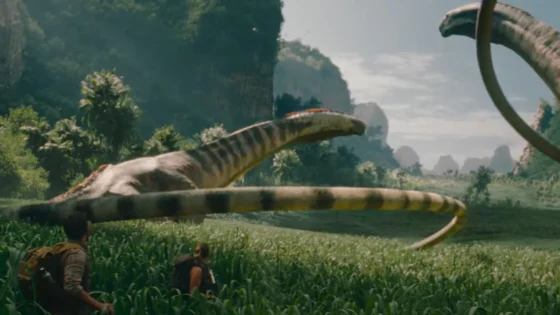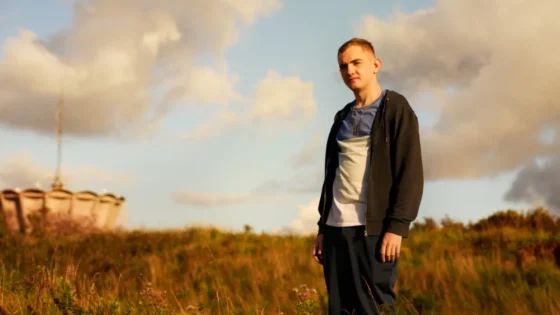It’s a truism that Paul Greengrass loves a tragedy. From his earliest TV work to films including United 93 and Green Zone, Greengrass uses his trademark shaky camera to create a verité portrait of violent turmoil that places his audience in the center of the action. Even in his completely fictional work with the Jason Bourne films, Greengrass’ handheld camera make his images more impactful and tactile, as if he’s documenting real life. His newest work, Netflix’s 22 July, takes as its subject the murder of 77 Norwegians by right-wing terrorist Anders Breivik in 2011. Greengrass flirts with exploitation and sadism in 22 July’s first half, which meticulously documents Breivik’s preparations and his cold-blooded slaughter, yet he finds a way to restore a voice to the victims and survivors in the more meditative second half.
The first thing we see is Breivik (Anders Danielsen Lie) preparing fertilizer to be used as bombs. The film’s music and the dingy lighting of Breivik’s shed make him look more like a serial killer preparing an attack than a deranged racist murderer. His attack of July 22 is divided into two major components. The first part involves parking a van filled with explosives near the office of the Norwegian prime minister. A security guard notices the unauthorized vehicle, but the device explodes before he is able to check it, killing eight and injuring 209 people.
The second, and far more deadly, part of Breivik’s attack occurs on the island of Utøya. After escaping the blast, the bomber arrives at the island disguised as a police officer. On the island is a summer camp for young members of the ruling left-wing political party. Breivik secures a ferry to the island, claiming to be a police officer sent to provide security in the wake of the blast. Once on the island, he drops the façade and begins to indiscriminately mow down trapped teenagers.
This first section is one of the most effective and virtuosic sequences of Greengrass’ career. His roving camera turns the small Norwegian island in to the battlefield that it really was. But it’s also an incredibly painful sight to behold. There’s no time to get settled or come to understand the denizens of the island before they are brutally murdered. When Breivik guns down the campers unlucky enough to be in the lodge when he first arrives, the camera opts for a moment of taste and films the massacre from outside, leaving it up to our imaginations. Yet it’s only a tease, and from then on Greengrass brutally photographs the violent murders at the barrel of Breivik’s assault rifle.
Yet in its second section, 22 July, seeks to atone for some of the excess of its first half. The surviving campers, who we know so little about, begin their recovery process, and we come to understand the depths of their fear and trauma. Jonas Strand Gravli is excellent as the severely injured camper who sets an ambitious timeline for his recovery: he must relearn how to walk unassisted in order to testify against Breivik without a cane or any other sign of weakness.
But the show is stolen by Lie as Breivik. He has a dead-eyed stare and blank face that only rarely betrays any kind of emotion. He doesn’t especially look like the real-life Breivik, but his mastery of his mannerisms in the court scenes is quite chilling. If there’s a flaw in the character, it belongs with the screenplay, which shows little interest in what may have driven Breivik to his racist views.
The dual structure of 22 July inevitably pits the two sections against each other. The first is technically flawless, and one of Greengrass’ most impressive works of film, but it’s also sickeningly cold. Greengrass is on shakier ground with the second half — the shaky cam is his signature, but it’s not at all necessary to have the camera constantly juddering during intense courtroom scenes. Still, the section is a departure for Greengrass, one that saves the film from merely being a beautifully executed exploitation of tragedy
The Toronto International Film Festival runs September 6 – September 16. Visit the official website for more information.


































